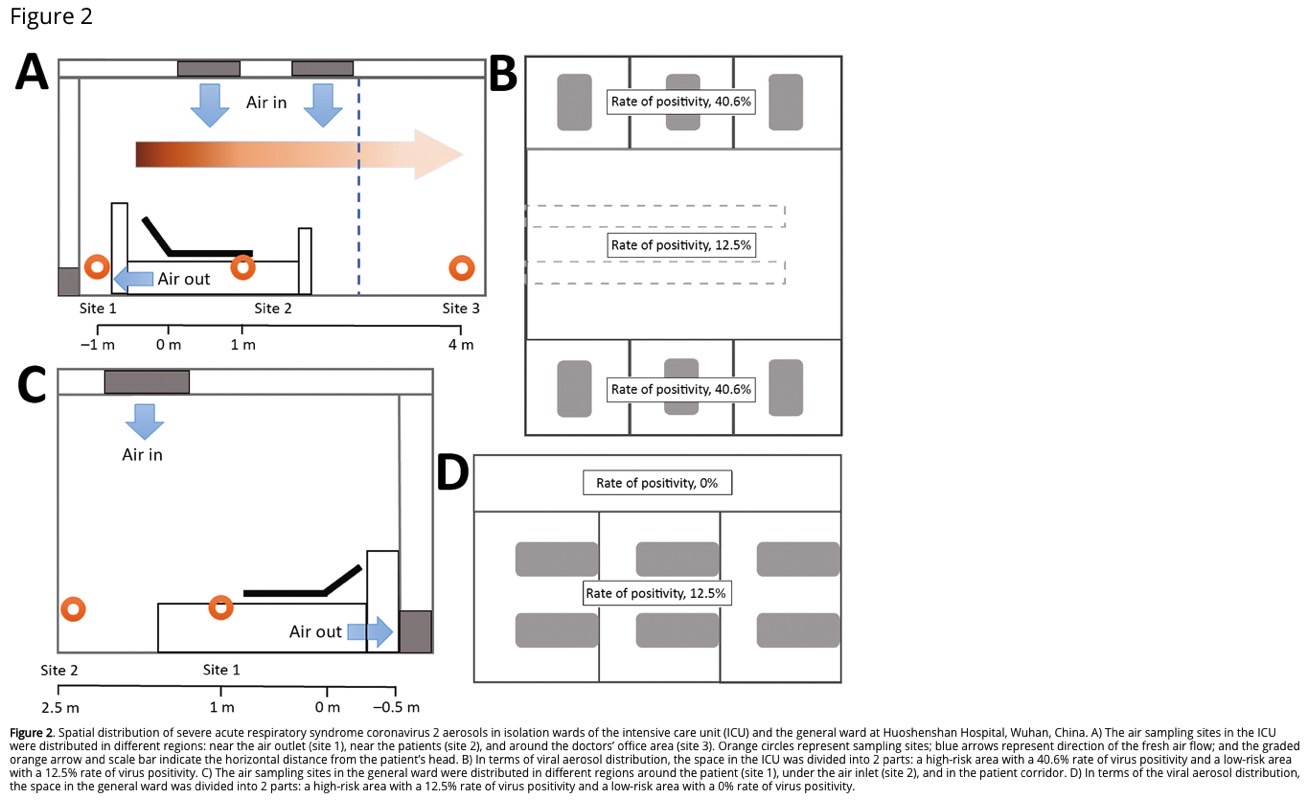CDC: Coronavirus Might Travel Up To 13 Feet In The Air
- A new study published on the CDC's coronavirus website says the SARS-CoV-2 virus can travel up to 13 feet in the air.
- The study showed that several everyday objects in hospitals contained traces of the virus from COVID-19 patients and medical staff.
- Coronavirus traces were found on the soles of doctors' shoes and in the pharmacy of the hospital where there were no patients.
- Visit BGR's homepage for more stories.
Social distancing guidelines for the novel coronavirus differ depending on who you ask. The World Health Organization (WHO) says you should stay 3 feet (1 meter) away from others to minimize the risk of infection. The Centers for Disease Control and Prevention (CDC) recommends double that, or 6 feet (2 meters).
The idea is that the further you distance yourself from other people, the less likely it is that you will come in contact with virus-laden droplets from their saliva that can be ejected while coughing, talking, eating, etc. But according to a new study from China published on the CDC's website, viral particles were discovered some 13 feet (4 meters) away from patients inside a hospital with controlled airflow.
In the past few weeks alone, we've seen reports that said the novel coronavirus might be able to travel up to 27 feet (8 meters), as well as video simulations of particles moving through the air in various environments. These studies suggested that it's a good idea to wear face protection when you're out of the house, even in grocery stores. The CDC also changed its stance on face masks a few days ago, advising people to wear a mask in public.
The new research reinforces the idea that the novel coronavirus can travel a great distance through the air and will land on an untold number of surfaces in the process. That's why social distancing, hand washing, and disinfecting of common surfaces could lower the risk of transmission.
What's more interesting is that the researchers performed the study in a hospital, where cleanliness and airflow are controlled and maintained. The study showed that intensive care units (ICUs) were more likely to have a higher rate of positivity, as they house severe COVID-19 cases.
The researchers found the SARS-CoV-2 virus on the floors as well as on the soles of the shoes of physicians. They discovered traces of the virus on the floor of the hospital's pharmacy, where there are no COVID-19 patients. "They also found traces of the virus on all the objects that are touched frequently by staff and patients. The highest rates were for computer mice, followed by trash cans, sickbed handrails, and doorknobs," the study reads. "Sporadic positive results were obtained from sleeve cuffs and gloves of medical staff."

The researchers also measured how far aerosols would travel, and they obtained positive results as far as 13 feet away from patients, as seen in the image above. Previous research showed that micro-droplets could linger in the air rather than be pulled down by gravity like bigger ones, and something as simple as opening a window could create a draft that would disperse the aerosols. The researchers in the new study found that the virus wouldn't just follow the airflow, and would be found in downstream areas as well.
The researchers warn that the study has two limitations. First, it's unclear whether the virus collected on the soles of shoes or on objects is still viable. The tests detected the nucleic acid, but that's not enough to prove the virus is still contagious. Also, the transmission distance of an infectious dose could not be determined.
These findings, however, prove that personal protective equipment is vital in any medical facility treating COVID-19 patients, especially the ICU. The researchers also note that at-home treatment of patients might have the undesired effect of infecting other family members given the findings above. Or, in other words, if you're taking care of someone who has coronavirus symptoms, you'll have to try to isolate the person from everyone else, and treat everything he or she touches as contaminated material that needs to be washed and disinfected. The patient should wear face masks as often as possible, which should be replaced and disposed of regularly. The caregiver should also wear face masks and eyewear protection, and wash their hands often after touching contaminated objects.
The study also says that as of March 30th, no staff members at the hospital where the research was conducted had been infected with SARS-CoV-2, "indicating that appropriate precautions could effectively prevent infection."
